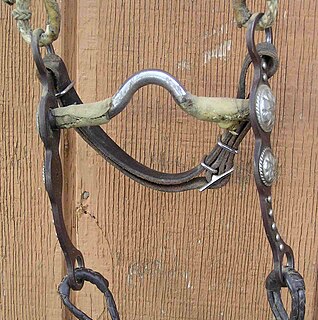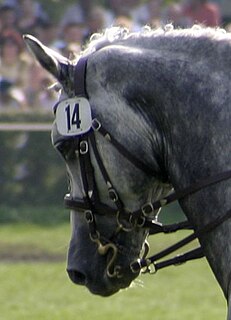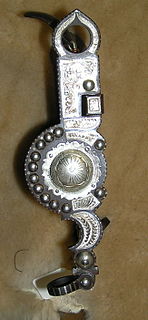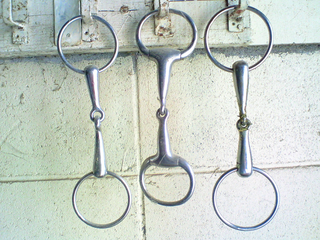
A bit guard (cheek guard in Australia) is a specialty piece of horse tack: a washer, usually made of flexible rubber, that is sometimes used in pairs on a bit.
Tack is equipment or accessories equipped on horses and other equines in the course of their use as domesticated animals. Saddles, stirrups, bridles, halters, reins, bits, harnesses, martingales, and breastplates are all forms of horse tack. Equipping a horse is often referred to as tacking up. A room to store such equipment, usually near or in a stable, is a tack room.
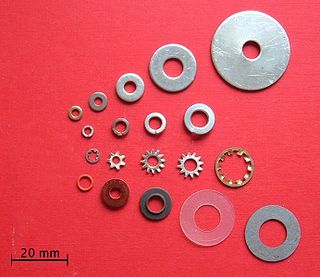
A washer is a thin plate with a hole that is normally used to distribute the load of a threaded fastener, such as a bolt or nut. Other uses are as a spacer, spring, wear pad, preload indicating device, locking device, and to reduce vibration. Washers often have an outer diameter (OD) about twice their inner diameter (ID), but this can vary quite widely.

A bit is a type of horse tack used in equestrian activities, usually made of metal, or a synthetic material. It is placed in the mouth of a horse and assists a rider in communicating with the animal. It extends from one side of the mouth across to the other and rests on the bars of the mouth, which are a region, between the incisors and the molars, where there are no teeth. It is held on a horse's head by means of a bridle and has reins attached for use by a rider.

Reasons for using a bit guard include:
- to protect the horse's lips from chafing or pinching by the bit rings
- to provide a better fit when the bit is too wide for the horse's mouth
- to prevent the bit rings from being pulled through the horse's mouth
A pair of bit guards is placed on a bit by stretching them to pass over one bit ring. Then the bit is attached to a bridle. The bridle is then put on a horse so that the bit guards lie outside of the horse's mouth. Bit guards are used with loose ring snaffle bits, gag bits, and pelham bits. Bit guards are used more often in jumping events, such as eventing and show jumping, and in polo. They are not permitted in competitive dressage, and are not used in horse show hunt seat competition.

A bridle is a piece of equipment used to direct a horse. As defined in the Oxford English Dictionary, the "bridle" includes both the headstall that holds a bit that goes in the mouth of a horse, and the reins that are attached to the bit.

A snaffle bit is the most common type of bit used while riding horses. It consists of a bit mouthpiece with a ring on either side and acts with direct pressure. A bridle utilizing only a snaffle bit is often called a "snaffle bridle", particularly in the English riding disciplines. A bridle that carries two bits, a curb bit and a snaffle, or "bradoon", is called a double bridle.
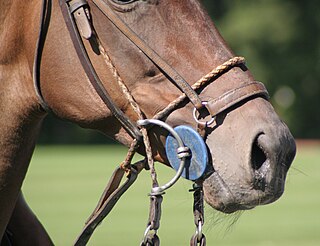
The gag bit is a type of bit for a horse. Because the cheek piece and reins attach to different rings there is leverage action. Severity of leverage action depends on where the reins attach. For example, in a Dutch Gag, the further the rein attachment from the mouthpiece the greater the leverage. The gag bit is related to a Pelham bit and a double bridle but the gag bit has no curb strap.
A pair of bit guards with an integral forked strap, to suspend them from the browband or crownpiece of the bridle, are known as cheekers (see Frentera).

A frentera is a part of some halters and bridles, usually on a horse. It is a cord, strap, or chain on the face of the horse that is attached to the crownpiece or browband and runs down the horse's face to the noseband or bit rings. A frentera can be split at the top to pass on either side of the forelock, or on either side of the ears. In the latter case, the frentera usually substitutes for a browband. A frentera can also be split at the bottom into two or more parts to support and stabilize a heavy noseband or bit.






